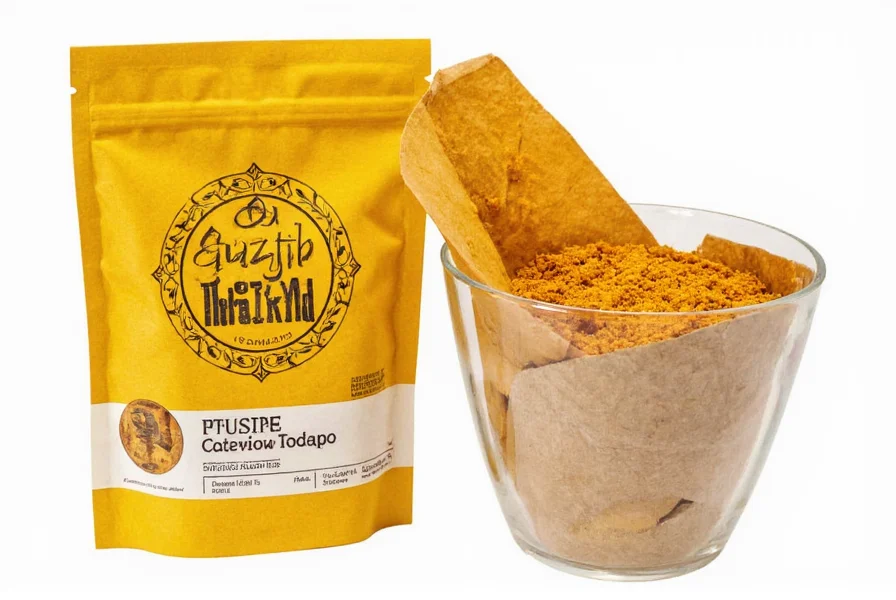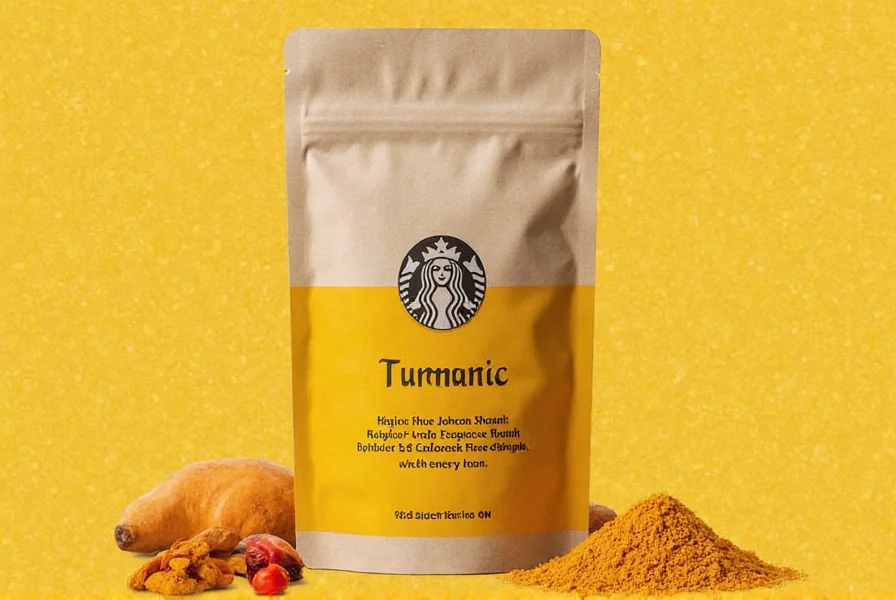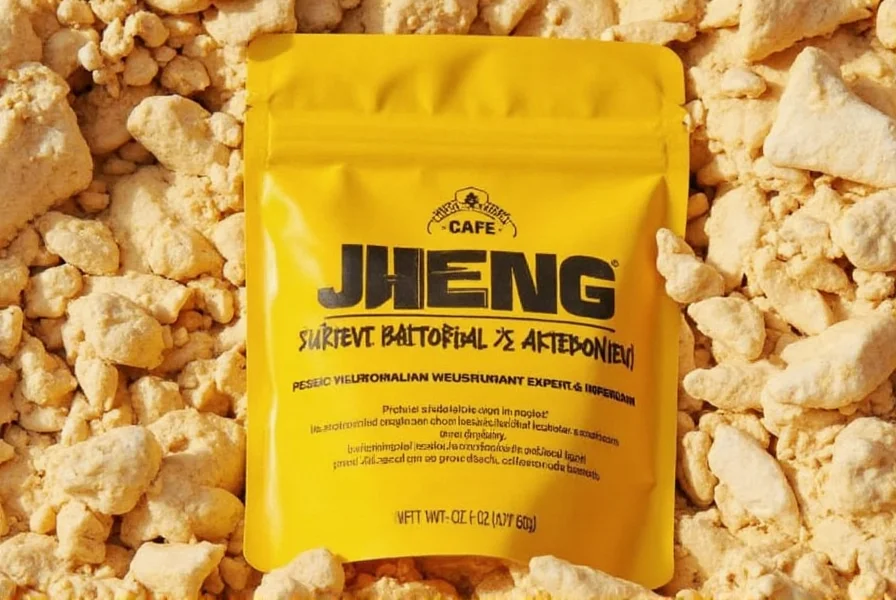As golden-hued drinks gain popularity in wellness circles, cafe turmeric has emerged as a staple offering in health-conscious coffee shops. This vibrant beverage, sometimes called a turmeric latte or golden milk, represents a fusion of traditional Ayurvedic practices with modern cafe culture. Understanding what cafe turmeric actually is—and isn't—helps consumers make informed choices about this trending drink.
What Exactly Constitutes Cafe Turmeric?
The term "cafe turmeric" can cause confusion since it contains no coffee despite the "cafe" designation. This misnomer stems from its common placement on cafe menus alongside coffee and tea options. Authentic cafe turmeric consists of:
| Core Ingredients | Common Variations | Purpose |
|---|---|---|
| Turmeric (fresh or powder) | Curcumin extract | Provides active compounds and color |
| Milk base | Almond, oat, coconut milk | Enhances curcumin absorption |
| Black pepper | Piperine supplement | Increases bioavailability by 2000% |
| Healthy fat | Coconut oil, ghee | Further improves absorption |
Many cafes now offer "turmeric coffee" blends that combine actual coffee with turmeric, but traditional cafe turmeric remains caffeine-free. The quality varies significantly between establishments based on ingredient ratios and preparation methods.
Health Considerations of Turmeric Beverages
Curcumin, turmeric's primary active compound, has been extensively studied for its anti-inflammatory properties. Research published in Food Science & Nutrition confirms that combining turmeric with black pepper and fat significantly enhances curcumin absorption—a crucial factor many cafes overlook when preparing cafe turmeric.
When evaluating turmeric beverages at cafes, consider these evidence-based points:
- A single serving typically contains 150-250mg of curcumin, well below therapeutic doses used in studies (500-2000mg)
- The anti-inflammatory effects are modest compared to pharmaceutical options
- Regular consumption may support overall wellness but shouldn't replace medical treatment
- Those on blood thinners should consult physicians due to potential interactions

How Quality Cafes Prepare Authentic Turmeric Beverages
Discerning cafes follow specific preparation protocols to maximize both flavor and potential benefits. The best establishments:
- Use fresh turmeric root when possible, which contains higher curcuminoid levels than powdered forms
- Maintain proper ratios: approximately 1 teaspoon turmeric powder per 8oz milk
- Always include black pepper (0.1-0.2% of turmeric weight) for bioavailability
- Simmer ingredients rather than simply mixing to enhance extraction
- Use full-fat milk alternatives to improve curcumin absorption
Unfortunately, many cafes serve watered-down versions with insufficient turmeric or omit black pepper entirely, significantly reducing potential benefits. When ordering cafe turmeric, don't hesitate to ask about their preparation method to ensure you're getting a properly formulated beverage.
Where to Find High-Quality Cafe Turmeric
While mainstream coffee chains have introduced turmeric beverages, specialty cafes and wellness-focused establishments typically offer superior versions. Look for these indicators of quality:
- Cafes that source organic turmeric directly
- Establishments that prepare turmeric paste in-house rather than using pre-made mixes
- Menus specifying inclusion of black pepper for absorption
- Vendors who can explain their turmeric sourcing and preparation methods
Geographically, cafe turmeric appears most frequently in urban centers with strong wellness cultures, though its availability continues expanding globally. In North America, cities like Portland, Austin, and Vancouver lead in authentic offerings, while European cafes in Berlin and London have embraced the trend with locally adapted recipes.
Creating Cafe Turmeric at Home: A Practical Alternative
For those seeking consistent quality and value, homemade cafe turmeric offers significant advantages. A basic preparation requires minimal equipment and ingredients:
- Simmer 1 cup milk (dairy or plant-based) with 1 tsp turmeric powder, 1/4 tsp black pepper, and 1/2 tsp coconut oil for 5-7 minutes
- Add sweetener to taste (honey or maple syrup work well)
- Strain if using fresh turmeric root
- Optional: Add ginger, cinnamon, or cardamom for additional flavor

This home preparation costs approximately $0.75 per serving compared to $4.50-$6.50 at most cafes, while allowing complete control over ingredient quality and ratios. Many health-conscious consumers prepare larger batches of turmeric paste for quick daily use.
Understanding the Cultural Context
Turmeric beverages have deep roots in Ayurvedic tradition, where "haldi doodh" (turmeric milk) has been used for centuries as a wellness remedy. Modern cafe turmeric represents a Western adaptation of this ancient practice, sometimes losing important elements in translation.
Traditional preparations emphasize specific timing (often consumed before bed) and precise ingredient combinations that many contemporary cafes simplify for commercial appeal. Understanding this heritage helps consumers appreciate both the cultural significance and proper preparation methods for maximum benefit.
Is cafe turmeric actually made with coffee?
No, traditional cafe turmeric contains no coffee. The "cafe" designation refers to where it's served, not its ingredients. Some establishments now offer blended versions combining coffee and turmeric, but authentic cafe turmeric is caffeine-free and made with turmeric, milk, and spices.
What's the difference between golden milk and cafe turmeric?
These terms are often used interchangeably, though golden milk typically refers to the traditional Ayurvedic preparation consumed at home, while cafe turmeric describes the commercial version served in coffee shops. Cafe turmeric often contains less turmeric and may omit key ingredients like black pepper that enhance absorption.
How often can I safely drink cafe turmeric?
Most adults can safely consume 1-2 servings daily. Turmeric is generally well-tolerated, but excessive consumption (more than 3-4 servings daily) may cause digestive discomfort in some individuals. Those with gallbladder issues or taking blood thinners should consult their healthcare provider before regular consumption.
Why do quality cafe turmeric drinks include black pepper?
Black pepper contains piperine, which increases curcumin absorption from turmeric by up to 2000%. Without black pepper (or piperine), the body absorbs minimal curcumin, significantly reducing potential benefits. Many cafes omit this crucial ingredient, making their turmeric beverages far less effective.
Does cafe turmeric really provide health benefits?
Turmeric contains curcumin, which has documented anti-inflammatory properties. However, the amount in a typical cafe serving is modest compared to therapeutic doses used in studies. Regular consumption may contribute to overall wellness, but it shouldn't be considered a treatment for medical conditions. Benefits are maximized when prepared with black pepper and healthy fats for proper absorption.











 浙公网安备
33010002000092号
浙公网安备
33010002000092号 浙B2-20120091-4
浙B2-20120091-4